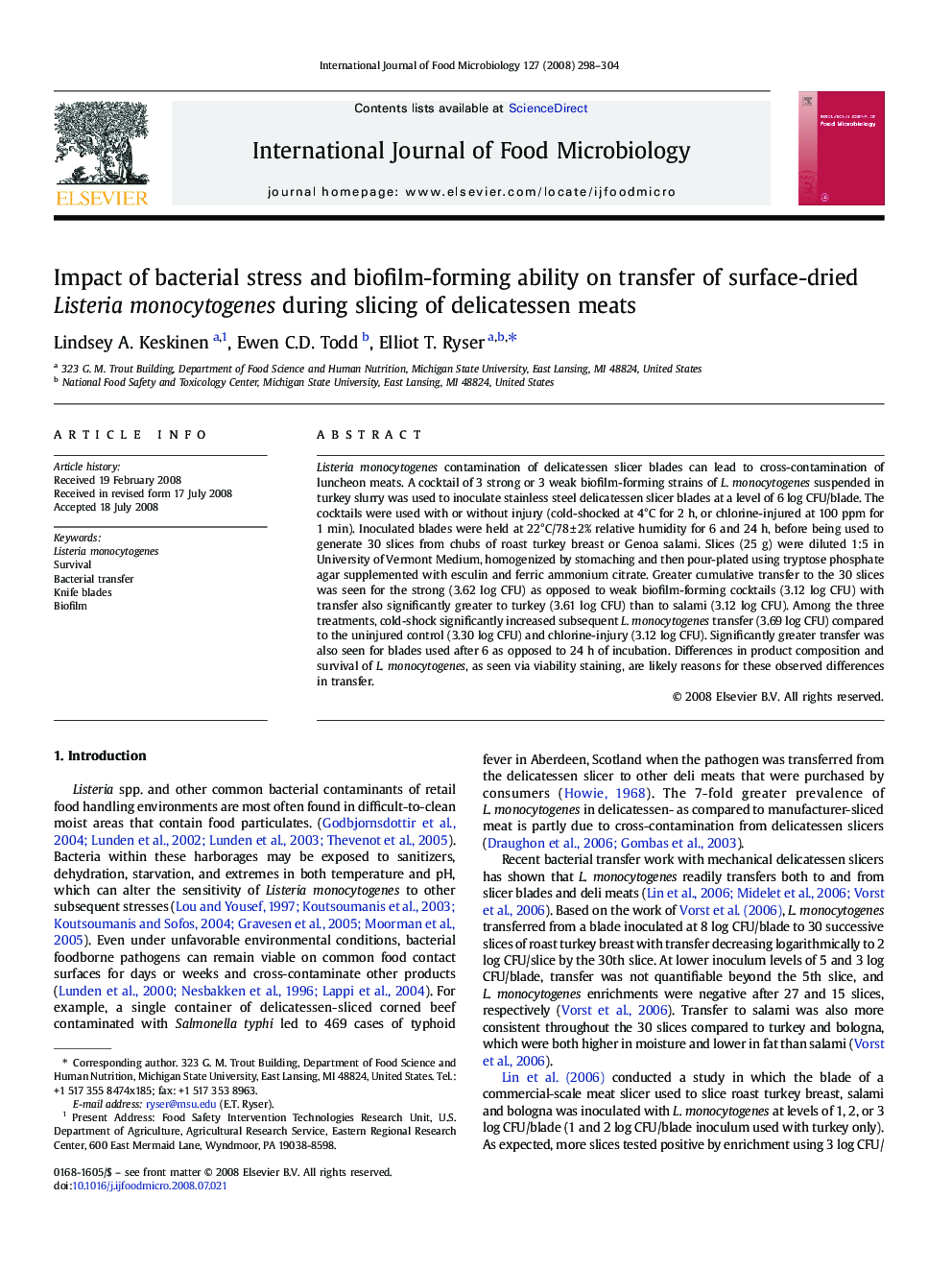| Article ID | Journal | Published Year | Pages | File Type |
|---|---|---|---|---|
| 4369777 | International Journal of Food Microbiology | 2008 | 7 Pages |
Listeria monocytogenes contamination of delicatessen slicer blades can lead to cross-contamination of luncheon meats. A cocktail of 3 strong or 3 weak biofilm-forming strains of L. monocytogenes suspended in turkey slurry was used to inoculate stainless steel delicatessen slicer blades at a level of 6 log CFU/blade. The cocktails were used with or without injury (cold-shocked at 4°C for 2 h, or chlorine-injured at 100 ppm for 1 min). Inoculated blades were held at 22°C/78 ± 2% relative humidity for 6 and 24 h, before being used to generate 30 slices from chubs of roast turkey breast or Genoa salami. Slices (25 g) were diluted 1:5 in University of Vermont Medium, homogenized by stomaching and then pour-plated using tryptose phosphate agar supplemented with esculin and ferric ammonium citrate. Greater cumulative transfer to the 30 slices was seen for the strong (3.62 log CFU) as opposed to weak biofilm-forming cocktails (3.12 log CFU) with transfer also significantly greater to turkey (3.61 log CFU) than to salami (3.12 log CFU). Among the three treatments, cold-shock significantly increased subsequent L. monocytogenes transfer (3.69 log CFU) compared to the uninjured control (3.30 log CFU) and chlorine-injury (3.12 log CFU). Significantly greater transfer was also seen for blades used after 6 as opposed to 24 h of incubation. Differences in product composition and survival of L. monocytogenes, as seen via viability staining, are likely reasons for these observed differences in transfer.
